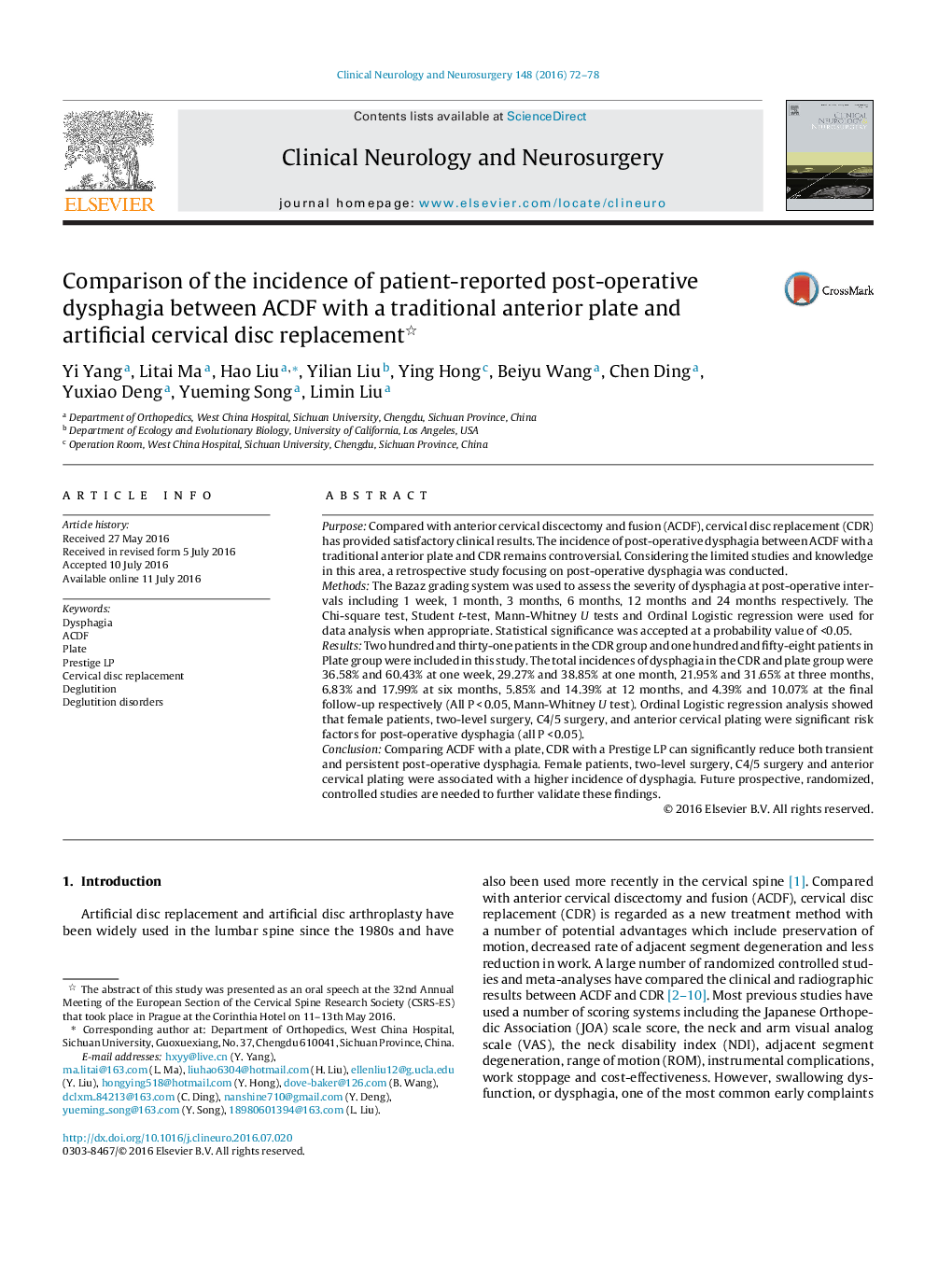| Article ID | Journal | Published Year | Pages | File Type |
|---|---|---|---|---|
| 3039524 | Clinical Neurology and Neurosurgery | 2016 | 7 Pages |
•CDR can significantly reduce the incidence of postoperative dysphagia compared to ACDF.•Female patients, two-level surgery, C4/5 surgery, anterior plate are risk factors of dysphagia.•Future RCTs are needed to further validate these findings.
PurposeCompared with anterior cervical discectomy and fusion (ACDF), cervical disc replacement (CDR) has provided satisfactory clinical results. The incidence of post-operative dysphagia between ACDF with a traditional anterior plate and CDR remains controversial. Considering the limited studies and knowledge in this area, a retrospective study focusing on post-operative dysphagia was conducted.MethodsThe Bazaz grading system was used to assess the severity of dysphagia at post-operative intervals including 1 week, 1 month, 3 months, 6 months, 12 months and 24 months respectively. The Chi-square test, Student t-test, Mann-Whitney U tests and Ordinal Logistic regression were used for data analysis when appropriate. Statistical significance was accepted at a probability value of <0.05.ResultsTwo hundred and thirty-one patients in the CDR group and one hundred and fifty-eight patients in Plate group were included in this study. The total incidences of dysphagia in the CDR and plate group were 36.58% and 60.43% at one week, 29.27% and 38.85% at one month, 21.95% and 31.65% at three months, 6.83% and 17.99% at six months, 5.85% and 14.39% at 12 months, and 4.39% and 10.07% at the final follow-up respectively (All P < 0.05, Mann-Whitney U test). Ordinal Logistic regression analysis showed that female patients, two-level surgery, C4/5 surgery, and anterior cervical plating were significant risk factors for post-operative dysphagia (all P < 0.05).ConclusionComparing ACDF with a plate, CDR with a Prestige LP can significantly reduce both transient and persistent post-operative dysphagia. Female patients, two-level surgery, C4/5 surgery and anterior cervical plating were associated with a higher incidence of dysphagia. Future prospective, randomized, controlled studies are needed to further validate these findings.
